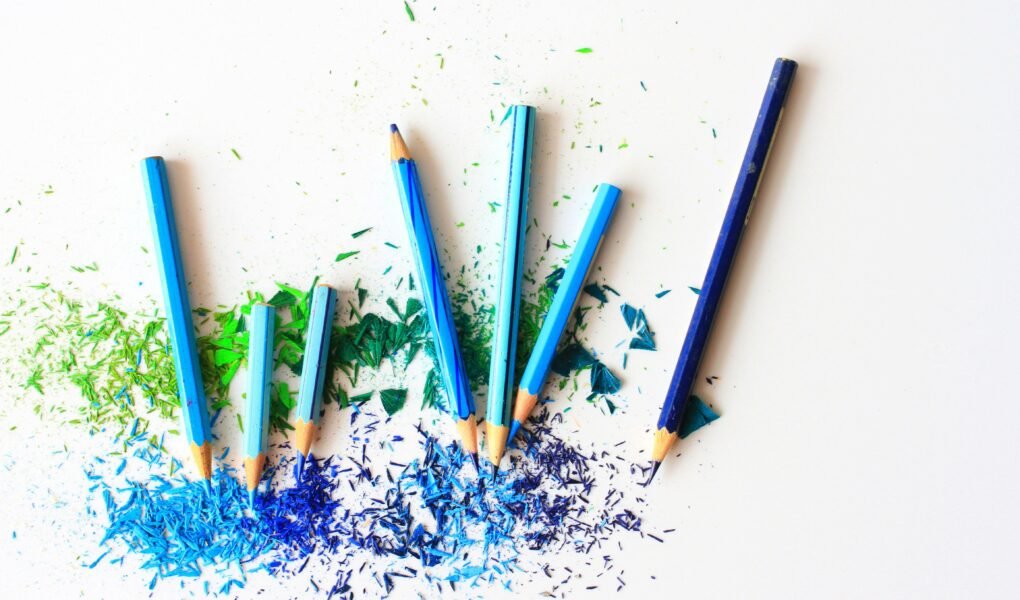implicity by using simple geometric shapes and even colors. There are no shadows or gradient effects used in this style, which makes it look cleaner and more modern. This style is very popular in user interface (UI) design and digital iconography.
4. Abstract Style
The abstract style in 2D illustration does not focus on realistic or even cartoonish representations of objects, but rather on the free and creative arrangement of visual elements. This style allows illustrators to express deeper emotions or ideas through color, shape, and composition that are not tied to the real world.
Using Color in 2D Illustrations
Color is one of the most important elements in 2D illustration art. Color not only serves to provide visual beauty, but also has the power to convey emotions, create depth, and attract attention. The following are ways you can use color effectively in 2D illustrations:
1. Color Psychology
Colors have the ability to influence our feelings and perceptions. As an example:
- Red often associated with passion, energy, or danger.
- Blue brings an atmosphere of calm, peace and trust.
- Yellow depicts joy, creativity, or thoughtfulness.
- Green reflects nature, balance and tranquility.
Choosing the right colors for characters or backgrounds can help create a mood that matches the message you want to convey.
2. Use of Color Palette
A color palette is a group of colors chosen to be used in an illustration. The use of a harmonious palette can create a visual effect that is more attractive and easily accepted by the eye. Some of the commonly used color palettes are:
- Monochromatic: Using variations of one main color to create an impression of unity and simplicity.
- Complementary: Using opposite colors on the color wheel to create dynamic contrast.
- Analogs: Using adjacent colors on the color wheel to create a soft harmonious effect.
3. Lighting and Shadows
Using proper lighting in 2D illustrations is also closely related to color. By adding shadows or color highlights, illustrators can create depth and give dimension to an image. This lighting technique helps manipulate how we see objects in an illustration, even though they remain in two-dimensional space.
Composition in 2D Illustration
Composition is how visual elements such as characters, backgrounds, and other objects are arranged in a work. Good composition can make 2D illustrations easier to understand and attract attention. Here are some composition principles that can be applied in 2D illustrations:
1. Rule of Thirds
Principle rule of thirds divide the image into nine equal parts with two vertical lines and two horizontal lines. By placing important objects or elements at the intersection of these lines, the image will look more balanced and dynamic.
2. Guide Lines and Focal Points
Guide lines are elements that guide the viewer’s eye to a specific point in an image, often using stripes or changes in color. The focal point is the part you want to emphasize, and its placement and arrangement in the composition greatly influences how the audience will draw their attention to the illustration.
3. Negative Space
Negative space is the empty area around a visual element. Even though it may seem simple, negative space can provide depth and contrast, as well as give existing elements room to “breathe.”
Turning 2D Illustrations into Impressive Works of Art
Producing impressive 2D illustrations is not just a matter of technical skills in drawing or coloring, but also how to combine all the visual elements harmoniously. Choosing a style, using the right colors, and good composition are the main factors in creating a work of art that is not only visually attractive, but also touches the emotions of the viewer.
2D illustrations can create a variety of worlds, from imaginative to ones very close to reality. The beauty of this art lies in the creative freedom it gives artists to express their ideas in a variety of ways. A unique style and thoughtful colors can turn ordinary illustrations into truly vibrant works of art.
Conclusion
2D illustration art is an extraordinary form of expression in the world of visual arts. By using style and color wisely, an illustrator can create work that is not only beautiful to look at but can also arouse emotions and convey a deep message. An understanding of color psychology, lighting techniques, and proper composition will strengthen 2D illustration artwork, making it stand out more and leave a deep impression on anyone who sees it.
FAQ
1. What is meant by 2D illustration? 2D illustration is visual art created in two dimensions, namely length and width, without depth. Typically, these are images created by hand or using digital software.
2. How does color affect a 2D illustration? Color can influence the viewer’s emotions, mood, and interpretation of an illustration. Choosing the right color can create depth, harmony or contrast in a work of art.
3. What are the commonly used 2D illustration styles? Styles commonly used in 2D illustration include cartoon, realistic, flat design, and abstract. Each style has different visual characteristics, tailored to the needs of the story or project.
4. What is composition in 2D illustration? Composition is the arrangement of visual elements in an illustration, such as characters, objects, and background. Good composition principles help make illustrations more interesting and easy for viewers to understand.
5. Why are 2D illustrations still popular even though 3D animation techniques exist? 2D illustration remains popular due to its simplicity, ability to express ideas directly, and unique aesthetic that cannot be replaced by 3D animation. Many artists choose 2D illustration because of the flexibility and artistic freedom it offers.


